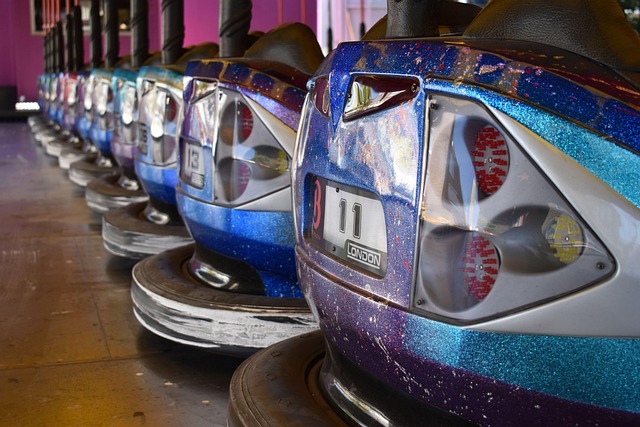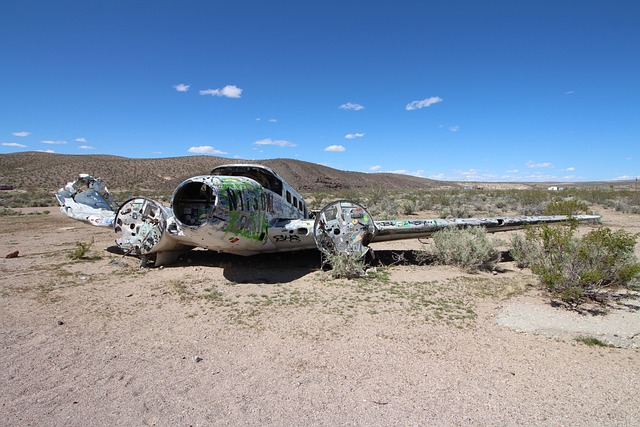Tesla Aluminum PDR Specialist: Lease Return Reconditioning Mastery
Tesla aluminum PDR specialists play a vital role in maintaining leased vehicles' optimal condit…….
In the rapidly evolving landscape of transportation, the pursuit of efficient, sustainable, and technologically advanced vehicles has become a global priority. At the forefront of this revolution is the Tesla aluminum PDR specialist, a pivotal player in the transition towards eco-conscious mobility. This article aims to delve into the intricacies of Tesla’s specialized approach, exploring its impact, technological innovations, and the broader implications for the automotive industry. By the end, readers will grasp the significance of this unique expertise and its potential to reshape the future of sustainable transportation.
Tesla aluminum PDR (Press-and-Drag) specialists are a specialized subset within Tesla’s engineering team, tasked with optimizing the use of aluminum in vehicle manufacturing. Their primary focus is to design and implement lightweight, durable, and cost-effective aluminum body structures for electric vehicles (EVs). This innovative process, known as Press-and-Drag technology, revolutionizes traditional metal forming methods by allowing precise shaping of aluminum alloys while reducing material waste.
Aluminum Alloys: Tesla sources high-strength, lightweight aluminum alloys from reputable suppliers, ensuring optimal performance and corrosion resistance.
Press-and-Drag Machinery: Specialized machinery is employed to form the aluminum sheets into complex shapes with minimal waste. This technology enables the creation of intricate panel designs that would be challenging to achieve through conventional methods.
Computer-Aided Design (CAD) Software: Advanced CAD systems are utilized for precision engineering, allowing designers to create detailed digital models of aluminum components before physical production.
Tesla’s journey in aluminum PDR innovation began as a response to the growing demand for lightweight materials in EV manufacturing. Recognizing the potential benefits of aluminum’s low density and high strength, Tesla invested heavily in research and development to perfect this technique. Over time, they have successfully integrated Press-and-Drag technology into their production processes, setting new standards for efficiency and sustainability.
The influence of Tesla’s aluminum PDR specialist extends far beyond its California headquarters, shaping the global automotive industry in several significant ways:
| Region | Impact | Trends |
|---|---|---|
| North America | Tesla has led the way in popularizing electric vehicles, with its innovative use of aluminum contributing to a surge in EV adoption. | Increasing focus on lightweight materials to enhance range and efficiency. |
| Europe | Many European automakers are adopting Tesla’s strategies, aiming to reduce their carbon footprint. | Strict emission regulations drive the need for lightweight, efficient designs. |
| Asia-Pacific | Countries like China and Japan are investing heavily in EV infrastructure, with Tesla’s PDR techniques influencing local manufacturing practices. | Rapid growth in electric vehicle sales, coupled with government incentives, is pushing innovation in material use. |
The economic implications of Tesla’s aluminum PDR specialist are multifaceted, impacting both the automotive industry and broader global markets:
Market Growth: The global light-duty vehicle market, particularly for EVs, is experiencing rapid expansion. According to a 2021 report by IHS Markit, sales of electric cars reached a record 6.6 million units in 2020, a 46% increase from the previous year. This growth shows no signs of slowing down, presenting substantial opportunities for Tesla and its competitors.
Cost Efficiency: By optimizing aluminum PDR techniques, Tesla has demonstrated significant cost savings in vehicle production. Lightweighting components not only reduces material costs but also improves overall vehicle efficiency, leading to lower operating expenses for consumers.
Supply Chain Dynamics: The increased demand for high-quality aluminum alloys and specialized machinery has led to the development of new supply chains and partnerships. Tesla’s influence on these networks has the potential to reshape global trade patterns.
Tesla’s commitment to technological excellence is evident in its continuous improvements to the aluminum PDR process, driving innovation across various fronts:
Advanced Alloys: Researchers at Tesla have developed proprietary aluminum alloys with enhanced properties, including improved corrosion resistance and strength-to-weight ratios. These alloys enable the creation of even more complex vehicle structures.
Robotic Automation: The integration of robotic systems in PDR processes has increased precision and consistency, reducing human error. This automation is crucial for maintaining quality standards as production volumes scale up.
Digital Twin Technology: Tesla’s use of digital twins, virtual replicas of physical components, allows for extensive simulation and testing before actual production. This approach streamlines design iterations and accelerates time-to-market.
The development and widespread adoption of advanced technologies like aluminum PDR specialists are heavily influenced by policy and regulatory frameworks:
Emission Standards: Governments worldwide have implemented stringent emission regulations, encouraging automakers to invest in lighter vehicles to enhance fuel efficiency and reduce carbon emissions.
Trade Policies: International trade agreements often impact the availability and cost of materials, influencing Tesla’s sourcing strategies. For example, the US-China trade tensions have prompted reevaluation of supply chains, pushing for greater domestic manufacturing capabilities.
Incentives and Subsidies: Many countries offer financial incentives and subsidies to promote EV adoption and the development of advanced manufacturing technologies. These policies provide a favorable environment for Tesla’s aluminum PDR specialist to thrive.
Despite its numerous advantages, Tesla’s aluminum PDR specialist faces several challenges and criticisms that require strategic addressing:
Initial Cost Overhead: Implementing advanced PDR technology requires substantial upfront investment in machinery and training. This can be a barrier for smaller automakers or those with limited financial resources.
Supply Chain Disruptions: As global demand for aluminum and specialized components increases, ensuring a stable supply chain becomes critical. Geopolitical tensions and natural disasters can disrupt these networks, impacting vehicle production schedules.
Environmental Concerns: While Tesla promotes sustainable mobility, critics argue that the energy-intensive nature of aluminum production and recycling processes may negate some environmental benefits, especially in regions with less efficient power grids.
Strategic Solutions: To overcome these challenges, Tesla and its industry peers can:
Tesla’s widespread adoption of aluminum PDR techniques is evident in the success of its Model 3 sedan. By employing advanced Press-and-Drag methods, Tesla significantly reduced the weight of various body panels, resulting in improved range and efficiency. This case study showcases the direct impact of PDR specialist expertise on a mass-market EV.
The futuristic design of the Cybertruck pickup truck is another testament to Tesla’s aluminum PDR specialist capabilities. The vehicle’s distinctive, angular aesthetics are not just visually appealing; they also demonstrate advanced metal forming techniques. Each panel is meticulously crafted using Press-and-Drag technology, ensuring both strength and lightweight properties.
Tesla has formed strategic alliances with several automotive giants to establish regional production facilities, leveraging local aluminum PDR expertise. For instance, their partnership with Panasonic in Japan has enabled the development of advanced battery packs using lightweight aluminum enclosures, further enhancing efficiency.
The future of Tesla’s aluminum PDR specialist is filled with promising possibilities, as the automotive industry continues to evolve:
Material Innovations: Ongoing research will lead to the discovery of new, even lighter, and stronger aluminum alloys, further enhancing vehicle performance.
Smart Factories: The integration of artificial intelligence (AI) and Internet of Things (IoT) technologies in production facilities will enable real-time optimization of PDR processes, improving efficiency and quality control.
Extended Range Vehicles: As battery technology advances, Tesla’s lightweight aluminum structures will play a pivotal role in enabling longer-range EVs, addressing range anxiety concerns.
In conclusion, the Tesla aluminum PDR specialist is not merely a technological advancement; it represents a significant step towards sustainable and efficient mobility solutions. Through its innovative use of Press-and-Drag technology, Tesla has demonstrated that lightweighting vehicle structures can be both technically feasible and economically viable. As the world grapples with climate change and seeks alternative transportation options, the expertise of Tesla’s PDR specialists becomes increasingly crucial in shaping a greener future for the automotive industry.
Q: How does Tesla’s aluminum PDR technology benefit consumers?
A: It results in lighter vehicles with improved efficiency, leading to lower operating costs and potentially longer vehicle ranges.
Q: Are there any environmental concerns associated with aluminum production?
A: While aluminum is considered a more sustainable option than traditional steel, the energy-intensive nature of production and recycling processes must be addressed for a truly eco-friendly outcome. Tesla is actively working on solutions to make this process greener.
Q: Can smaller automakers adopt Tesla’s PDR techniques?
A: Absolutely. Tesla offers consulting services and technology licensing to help other manufacturers implement similar processes, making advanced lightweighting accessible across the industry.
Q: What are the key advantages of using aluminum in electric vehicles?
A: Aluminum is highly corrosion-resistant, has a lower environmental impact than steel during production, and provides excellent electrical conductivity, all of which contribute to more efficient and sustainable EVs.

Tesla aluminum PDR specialists repair and restore damaged Tesla bodywork using a non-invasive techni…….

Tesla aluminum PDR specialists expertly restore damaged Tesla vehicles using paintless dent repair t…….

Tesla aluminum PDR specialists are experts in revitalizing hoods and fenders, using advanced tools a…….